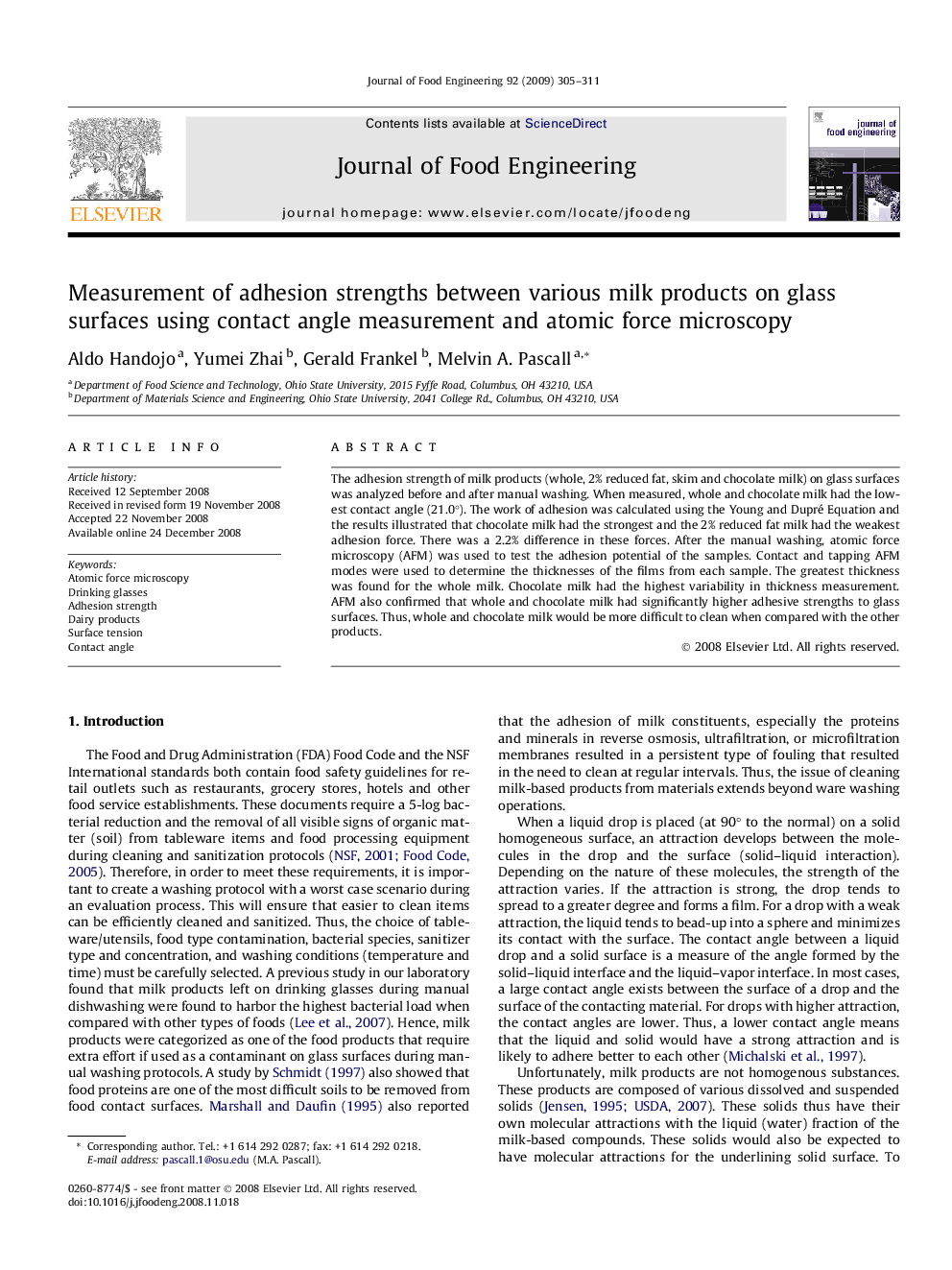| Article ID | Journal | Published Year | Pages | File Type |
|---|---|---|---|---|
| 224601 | Journal of Food Engineering | 2009 | 7 Pages |
The adhesion strength of milk products (whole, 2% reduced fat, skim and chocolate milk) on glass surfaces was analyzed before and after manual washing. When measured, whole and chocolate milk had the lowest contact angle (21.0°). The work of adhesion was calculated using the Young and Dupré Equation and the results illustrated that chocolate milk had the strongest and the 2% reduced fat milk had the weakest adhesion force. There was a 2.2% difference in these forces. After the manual washing, atomic force microscopy (AFM) was used to test the adhesion potential of the samples. Contact and tapping AFM modes were used to determine the thicknesses of the films from each sample. The greatest thickness was found for the whole milk. Chocolate milk had the highest variability in thickness measurement. AFM also confirmed that whole and chocolate milk had significantly higher adhesive strengths to glass surfaces. Thus, whole and chocolate milk would be more difficult to clean when compared with the other products.
